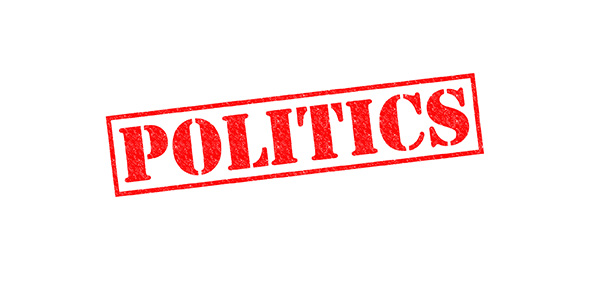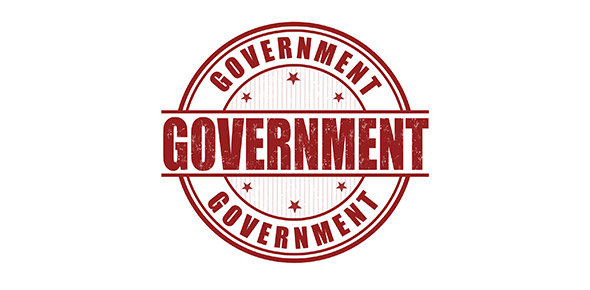Related Flashcards
Related Topics
Cards In This Set
| Front | Back |
|
Describe the main historical changes in
party and interest group strength. When did the historical turning
points occur? How can you explain those turning points?
|
Parties were the stronger influence up until the late 60's and 70's, when interest groups had a fast rise to power. Parties power began to decline due to divisions over civil rights, vietnam, and other social movements. These divisions led to new groups working outside the parties, and the republican realignment of the south further boosted interests groups power. The rise of K street was also a huge reason for interest groups rise, as business realized the potential to create corporate law firms and influence regulatory agencies, and become specialists in regulation.
|
|
How do elite and popular democrats
explain the rise of interest groups and the decline of parties?
|
Popular democrats are more critical of interest group politics than elite democrats. They argue that by reling on representatives and hried experts, they ask too little of ordinary citizens. That it is too easily manipulated by elite democrats.
|
|
What are the main differences between
parties and interest groups?
|
Parties seek to attain political power through elections, their tactics are to raise $, organize volunteers, train politcians, develop policy, and organize congress. Interest Groups are an organization of people united on a single issue, their single goal is to influence policy. They attempt this by raising and spending $, lobbying, advertising, developing policy expertise, and through member services.
|
|
Provide evidence to show the decline of
parties and the rise of interest groups.
|
Registered Lobbyists Party ID
1960 365 1965 85.00% 2000 16342 2000 55.00% 2005 34785 |
|
What sorts of advantages do business
interest groups have over their competitors in influencing American
politics?
|
Business interests groups make up nearly all of the lobbying groups in Washington. Trade associations allow the leaders of profitable industries to more easily influence public policy through Political Action Comittees, which lobbies legislators and contributes funds to campaigns not tied to a candidate or party.
|
|
What are the necessary ingredients for
mass movements to occur?
|
1. Rising Expectations- People do not rebel when conditions are at their worst, but when conditions have begun to improve and people begin to percieve a gap betwen the way things are and the way they could be.
2. Social Resources- Mass movements need "free spaces" or organizations located between private families and large public organizations where people can learn self-respect, cooperation, group identity, and the leadership skills necessary for democratic participation. 3. An Appealing Moral Cause- Must appeal to fundamental American Values. 4. Consciousness Raising- A sudden change of political consciousness occurs and people look at political facts differently. 5. Transformational leadership- Transforming leaders engage the full personalities of followers, teaching them to go beyond self-interest and express their commitments in direct political action. |
|
How do popular and elite democrats
differ in their interpretation of mass movements, in general, and of
the mass movements of the 1960s, in particular?
|
Elite democrats beliefe that the goals of mass movements in American history are usually utopian and impractical, they they lack concrete programs for reform that can benefit the people involved, and instead seek moral or ideological goals that are unrealizable and threaten to overwhelm democratic institutions. Elites believe people are enticed by "demagogues", who stir up resentment against the wealthy and privileged, that protest tactics are used to blackmail society.
Popular democrats point out that the country was born in protest, and that direct participation by citizens in protests has strengthened American democracy rather than weakened it. Conflict is inevitable and healthy for a democracy, but that "elite distemper" is the main threat to democracy stemming from protest, when elites that are fearful of losing their power react with violence and repression. Popular democrats maintain that protest movements have been the driving force behind reforms that make this country more egalitarian and democratic, and not just expressions of emotion. Specifically in the 1960's elite democrats charged protest tactics began to be used by any group that wanted to "shake more benefits from the government money tree." While, as popular dems would point out shows the danger of elite distemper, Elites actually used the FBI to treat MLK Jr. as an enemy, employing a campaign of character assassination through wiretaps and spying, repeatedly violating his civil rights. |
|
What have been the main movements in
American history and what have been their main accomplishments?
|
Abolitionists (1830-1860) - Abolition of Slavery
Labor (1880's-90's, 1930's) - Improved wages, benefits, job security, and safe working conditions Civil Rights (1950's-1960's)- Equal rights for Black Americans Anti-Vietnam War(Late 60's and early 70's)- US out of Vietnam Environmental Movement(1970s-Present)- Large construction projects must issue enviornmental impact statements, giving public a chance to comment. Neighborhood Organizing Movement(1960s-Present)- Many cities now have a decentralized policy-making authority to neighborhood governments. Anti-nuclear(1970's and 80s)- Stopped the construction of nuclear power plants. Gay Rights(1970s - Present) -Laws protecting the rights of gays, freeing them from employment discrimination, and the right to adopt children. Feminist(1970s - Present)- Most influential of all, transformed American society by opening opportunities for women that were previously unavailable, women's wages have gained relative to men. |
|
Explain the dilemmas of movement
leaders and of elites responding to movements. How have they
responded to those dilemmas?
|
Mass movement leaders often find it difficult to balance the needs of protesters, who demand more radical action to express their moral outrage, with the need to appeal for outside support, which usually requires moderationd and patience.
Elite leaders worry that if they give in too readily, they risk encouraging more militancy and demands, but if they refuse to give in at all and attack the protesters with force, they risk creating public sympathy for the protesters. Interest group politics act as a safety valve that can deflate mass movements, since it turns them into an interest group. If elites choose a strategy of co-option, they have an advantage with time, because mass movements cannot maintain a fever pitch of activism for long. Often times as a problem is brought to public awareness by a mass movement, the elites will apoint a commision to find a solution, thus giving the impression that something is being done without committing to action. President Lyndon Johnson did this with the Kerner Commision in 1967, studying the cause of urban riots. If a mass movement reaches a certain momentum, the tactic of co-option loses its effectiveness, so elites turn to repression Examples include when 60,000 National Guardsmen were mobilized across ten states to bust the first national railroad strike. In the Pullman strike of 1894 President Cleveland called in federal troops who put down the strike at the cost fo 34 deaths and millions in property damage. |
|
Be sure you know what the main turning
points were in the history of the US labor movement and unions –
when unions became legal, why they became legal, what their
relationship was to the Democratic party after the 1930s, when the
union movement peaks, and why it goes into decline.
|
Pre-1930-Era of Illegal Unions- Knights of Labor were the leading nationwide union of the late 1880's. When congress declared collective action illegal, the Knights of Labor took to the ballot box to pass overturn the laws and deem them unconstitutional.
1930s-Protest and Legalization-The great depression led to 25% unemployment, unstable work, wage cuts, and longer hours. Laborers had mass protests and strikes, notably the "Battle of Toledo" and the Longshoremen of SF. Workers distrupting politics led to a large voter turnout, which in turn led to the realignment of the Democratic party in 1932. FDR cut a deal with his new deal between business and laborer, by allowing business' to fix prices, and allowed laborers the right to organize, this was known as the National Recover Administration. When his NRA proposal was found unconstitutional, he turned to Labor Unions to attack the "economic royalists", and passed the Wagner Act of 1935, legalizing unions. 1950's and 60's- Peak -In 1955, 33% of the labor force was unionized. The two largest unions, the American Federation of Labor and the Congress of Industrialized Organizations, merged and began creating PAC's that pushed for full employment, minimum wage, unemployment benefits, and social security. Got the vote out for Democrats in return for their help passing these policies. 1970s through Present- Decline - Globalization increased international competition and mobilized business, making it harder for Unions to have power. Unfavorable labor laws are also responsible for the decline. Only 12% belong to a union today |
|
What are the main Constitutional powers
of Congress?
|
The main constitutional powers of congress are to make laws, declare war, and the "power of the purse".
|
|
How is Congress organized? Where does
most of the work occur?
|
Four factors contributed to the organization of congress in the individualistic congress, with importance firstly stressed on individual members and their districts.. Most of the work is done in Standing Committees, permanent bodies made up of congressmen that gather information through investigatiosn and hearings, draft legistlation, and report it to their parent chambers for a potential vote, they are second in the order of importance, followed by parties and leadership. The Republican revolutionaries of 1995 attemped to reverse the order.
|
|
What is an “iron triangle” and why
is it a problem for democracy?
|
The iron triangle occurs when legaislators join a particular committe because they wish to serve interest groups that are important in their home district or state, and form alliance swith the major interest groups and executive agencies with which their committees interact. This is a problem because legislators use their expertise to self serve, by supporting the interest groups, they gain political support and campaign contributions. The iron triangle is made up of a Congressional Committee, an Interest Group, and an Executive Agency.
|
|
What are the main changes in the
organization of Congress since the1970s?
|
Committe leaders sought to gain media attention by initiating new and innovative legistlation, so large numbers of staff aides were hired. These aides took over a large bulk of the of legislators work. Democrats in the House strengthened subcommittes at the expense of committees to diminish the power of committee chairs, and to allow new representatives to clain a piece of the legislative "pie". In the early 90's committes began to lose some of their power due to deficits and losing influence to party leaders. In the 1980's Congress parties grew more cohesive and unified. Congressional Leadership has also grown largely since the 1970's. For example the Speaker of the House was now able to name majority members of the Rules committee(decides how much time is devoted to floor debate of a bill). Members o congress now have a collective pursuit of a partisan and idealogical agenda for re-election, rather than the individualistic method of appealing to their constituents.
Since regaining control of Congress, Democrats are also operating a partisan congress |
|
How does a bill become law? (what is
the process?)
|
First a bill is introduced in the Senate or House (or both), where it is then referred to committee who will hold hearings and recommend passage. If the committee okays the bill it is then debated in the whole House or Senate, where its then passed to either the opposite chamber or, if already passed through both, it is given to the President to sign into law.
|





